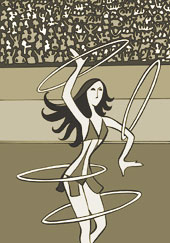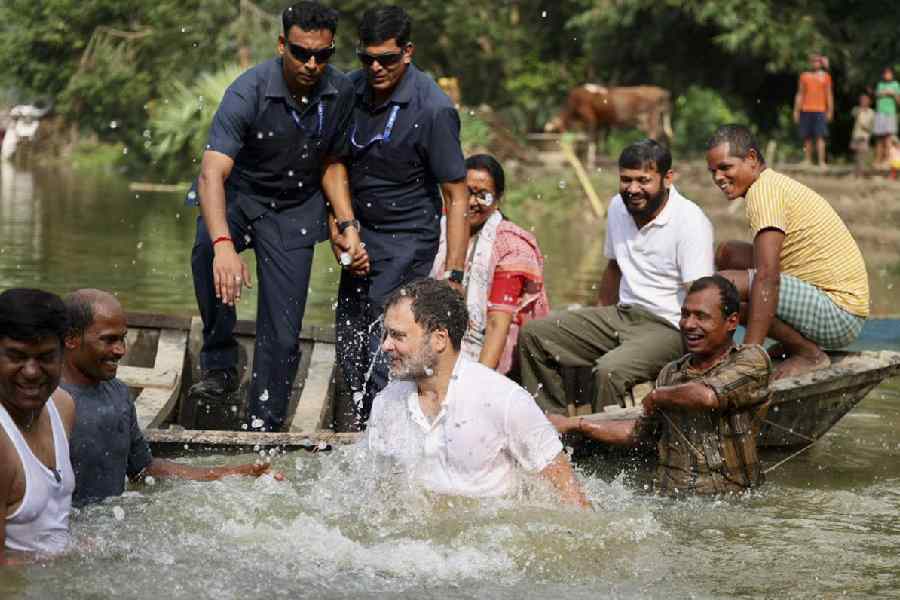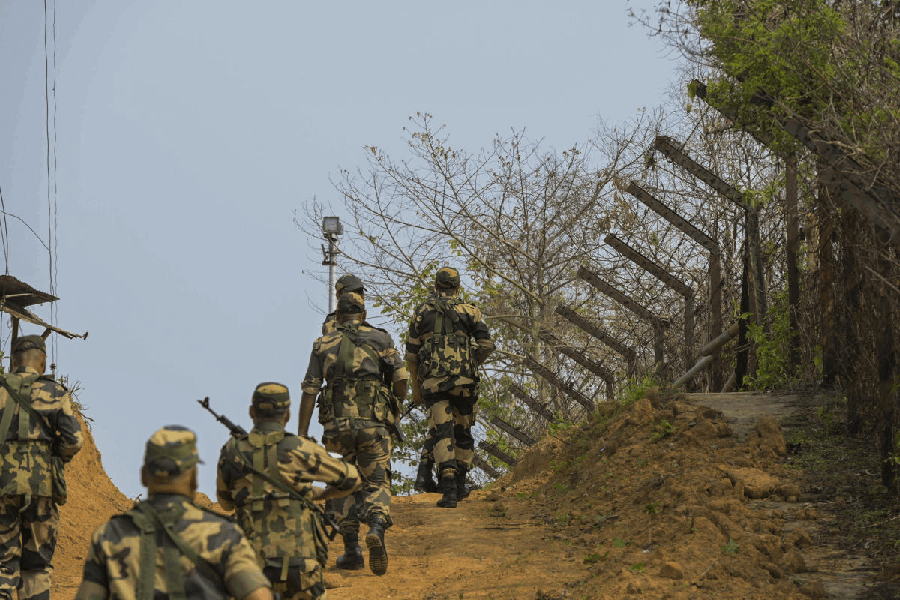 |
Seventeen years ago, they descended on the city in all their splendour and left the Indian circus-goer mesmerised with their grace, skills and flair. And then, they departed as quickly as they had arrived. Time rolled by, and many assumed that they would never return to thrill ? that watching a Russian circus troupe perform in person would be but a once-in-a-lifetime experience.
The assumptions have been proved wrong. The ice maidens have come calling again. Only, they come at a time when India?s own circus industry is in a complete shambles. Pushed to the fringes of mainstream entertainment, the Indian circus ? which celebrated a low-profile 125th anniversary at the Talkatora Stadium in New Delhi last month ? is on the highway to an unceremonious demise. ?Some 20,000 artistes and (their) families are on the brink of extinction,? C.P. Krishan Nair of the Indian Circus Federation observed at the function. ?Unless we get help fast, the circus will die.?
Even a couple of decades ago, few would have agreed with Nair. With the advent of winter in the city, names such as Rajkamal, Gemini, Jumbo and Olympic ? all circus companies ? would do the rounds during lunch breaks in schools. Tents would mushroom overnight in the public parks across the city. Motorcycles without silencers could be heard vrooming in the distance. The neon beams would light up the skies every night, as if to announce to one and all that the show was on.
Each circus would have its own unique USP: the clowns; the animals; the knife-throwers; the trapeze artistes. A couple of eventful hours at the tents on a Sunday afternoon would provide enough fodder for a week?s animated conversation in the back-benches and in between classes in school. A book or a film that bordered on the circus was an instant hit. Don?t forget Satyajit Ray?s Chinnamastar Abhishaap, or the evergreen Raj Kapoor flick Mera Naam Joker. The great Indian circus was there to stay.
Or so it seemed then. Now, it is clear that hard times have come easy ? and too soon ? for the Indian circus companies. Thanks to an extent to the Wildlife Protection Act, 1970, and some fiery demonstrations by animal rights activists, elephants balancing on one foot and tigers leaping through rings of fire are history. Sports minister Sunil Dutt and information and broadcasting minister S. Jaipal Reddy both reportedly admit to have seen wild animals for the first time in their lives while going to the circus as children. Not many kids are as lucky these days.
Stringent child labour laws, too, have taken their toll, since most companies still continue to employ crudely trained child artistes. ?Children have the flexibility to perform difficult acrobatics and gymnastics,? a former trapeze artiste was reported to have commented in defence. Not many would buy her words, though.
In the face of failing business, circuses have shifted base from the cities to semi-urban areas. And in a desperate bid to make ends meet, circus-owners have resorted to unfair practices. Tents across India from UP to Kerala have been raided on tip-offs of alleged child-trafficking. The authorities have seldom been proved wrong.
Despite the odds, a little help from the government may still change things for the better. The Russians provide you with a case study. Over the last decade, the USSR has come to mean little more than an entry rarely looked up in the dictionary of abbreviations. Piles of Soviet children?s literature have vanished without a trace from bookstores the world over (they don?t read folk tales about the beautiful Vassilisa anymore). One isn?t sure if the fiddlers still play their soulful tune perched atop huts in rural Russia.
The Russian Circus, however, continues to perform. And how. Twice a day, the curtains part at the Netaji Indoor Stadium to spring forth a visual treat on ice. Girls in sequinned body suits and men in stunning costumes move to superbly choreographed steps and leave the spectators enthralled with their acrobatic performance. There aren?t too many animals around, but not many are complaining.
?It only goes to show that for the circus to thrive, one needs to follow up the animals with superior human performance,? says Deka Debanga Kumar, a Moscow-based Non-Resident Indian and exclusive distributor of the state-owned Russian State Circus Company (RSCC). ?It?s something that the Russians have maintained.? And that?s what pays.
Animals, too, seem to have their way in the Russian circus. And unlike in India, animal rights activism is unheard of. They are treated ?at par with performers, really?, says Anna Semashko, manager of the international relations department of the RSCC. ?They (activists) don?t take offence to pets, do they??
Despite her keenness, however, Semashko is yet to see an Indian circus perform. ?I?ve heard it?s mostly animals, though,? she says. It?s only a matter of time before she may be proved wrong.
Compared to the way in which circuses are managed in India, Russia offers a study in stark contrast. As part of a 120-year-old tradition, the Russian circus industry currently thrives in 40 establishments scattered through the country?s 11 time zones. With about 5,000 performers on its payrolls and 6,000 animals to care for, the RSCC is one of the biggest public concerns in the country in the post-USSR era, offering prospective career opportunities to thousands of Russian youth.
State sponsorship has brought about its own developments. And perhaps there are a few lessons to be learnt from the way the Russians have done it. Perhaps the promises (?We can have a scheme where circus artistes can be sponsored,? Reddy reportedly pondered aloud) will bear fruit in the future. Perhaps granting industry status to the Indian circus and backing it up with governmental infrastructure will help. Perhaps not.
Perhaps the ice maidens will go away and never return again. Or perhaps they will. With or without the sea lions. But that?s a different story.
Illustration by Suman Choudhury










